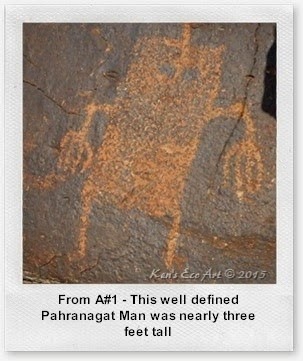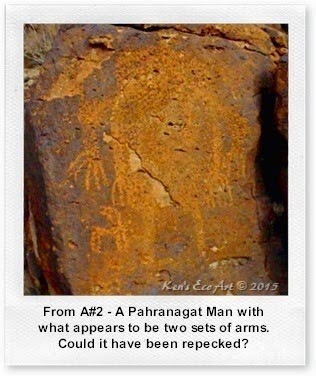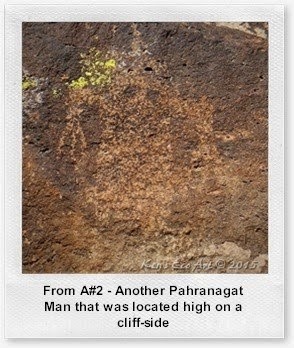{Click on an image to enlarge, then use the back button to return to this page}
This page last updated on 10/11/2017
Introduction: As I began to discover more and more rock art sites during my hikes over these past several years, I have become witness to far too many examples of where persons had seemed fit to deface them with graffiti and other examples of damage. Eventually I realized that the sharing of my hiking adventures could have the potential to increase public exposure, and thereby increasing the possibility for even more damage. As a result, I decided to preface each of my rock art pages with the following information to help educate visitors about the importance of these fragile cultural resources. Before scrolling down, I implore you to READ the following ... as well as the linked page providing guidelines for preserving rock art.
Here are a few simple guidelines you can follow that will help to preserve these unique and fragile cultural resources that are part of our heritage. Guidelines for Preserving Rock Art. If you would like to learn more about the Nevada Site Stewardship Program, go to my page ... Nevada Site Stewardship Program (NSSP).

 |
| (Fig. 01) |
|
 |
| (Fig. 02) |
Beginning in early November of 2014, I made three daytrips to Black Canyon, located inside the Pahranagat National Wildlife Refuge, for the purpose of searching out and collecting pictures of the unique rock-art found at this site. The more I searched the Internet about this prolific site between visits, the more knowledge I gained about its history and how much there was here to see. Each subsequent visit led me to discover and record more and more panels. After my last visit I discovered the map shown in (Fig. 02). This map shows the location of each individual petroglyph panel at the Black Canyon Site; each panel's location is marked by a circle - "o". My study of this map indicates that there are still a few panels that I have yet to locate and record, though I feel that I have captured pictures of the vast majority of what is available. Below I have provided links to the pages I created that provide pictures and a description of my hikes for my first two visits here. The remainder of this page covers my last visit on 02/13/2015 and provides a picture collection of the major panels and glyphs from each of my three visits.
11/13/2014 Trip Notes: I made this trip to the Pahranagat DWR with the rock-hounds from the Heritage Park's Senior Facility. Because I have been here on two previous occasions, my objective for this visit was to hike in the Black Canyon area and locate some of the Black Canyon petroglyphs. Click this link for pictures and information on this visit ... Black Canyon Petroglyph Site - Trip Notes for 11/13/2014.
11/19/2014 Trip Notes: Because I ran out of time on previous visit here to look for any more petroglyphs, I decided to visit the Black Canyon Petroglyph Site once again, this time with hiking partners Robert Croke and Blake Smith. Heading to an area we missed on our last visit, we found dozens more petroglyphs including the famous Pahranagat Man. Click this link for pictures and information on this visit ... Black Canyon Petroglyphs - Trip Notes for 11/19/2014.

02/13/2015 Trip Notes: This trip was my third, and last visit to this site (Fig. 03), and even though I spotted nearly a dozen more panels than I did on my first two visits, I now know from the map in (Fig. 02) there are still more to be discovered. The majority of glyphs found here are concentrated in three major areas that I have identified as follows: {A#1} the cliffs on the eastern edge of the canyon shown in (Fig. 04) and by the yellow route in (Fig. 03); {A#2} the large hill or mound in the center of the canyon shown in (Fig. 05) and represented by the orange route in (Fig. 03); and {A#3} the long cliff on the west side of the highway and canyon shown in (Fig. 06) and represented by both blue and yellow routes in (Fig. 03). So far I have only completed a 'cursory’ investigation of {A#3}. Below I have taken pictures captured from each of these three areas and grouped them into four different categories for study and comparison. Please feel free to send me any information or comments you may have relative to any of these postings. I Should note that this area is currently closed for viewing until the Refuge receives more funding.
 |
| (Fig.03) |
|
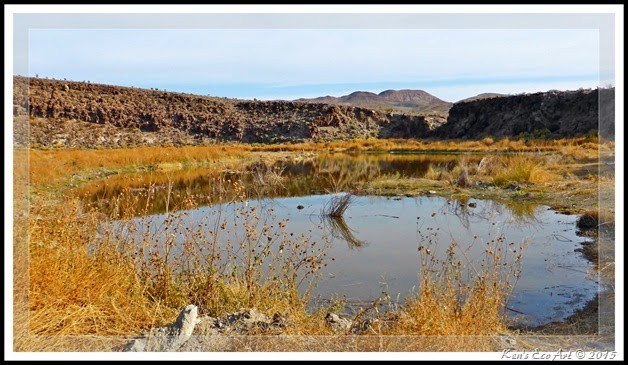 |
| (Fig. 04) |
|
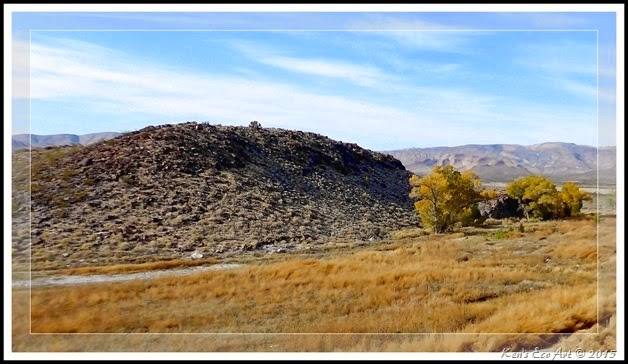 |
| (Fig. 05) |
|
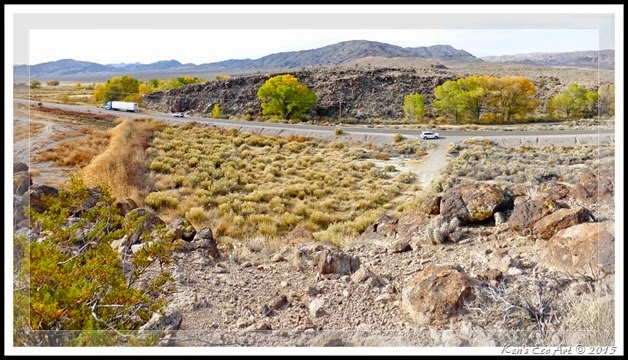 |
| (Fig. 06) |
|
 |
Understanding Pahranagat Valley Rock Art: Black Canyon (Fig. 01), located within the Pahranagat National Wildlife Refuge, is only one of nearly a half dozen rock-art sites within the Pahranagat Valley area of southeastern Nevada. Based on what they know so far, archaeologists have only been able to paint the Desert Archaic culture that lived here with a very broad brush. Dating, deciphering and understanding the meaning of the rock art found here has been elusive at best. It is generally agreed, however, that the indigenous people who once inhabited this area created some of these petroglyphs thousands of years ago. The rock art found here ranges in age from the Early Archaic cultures consisting of ABSTRACT rock art (ziz-zag and parallel lines, dots and circles) 5500 BC to AD 1, including REPRESENTATIONAL rock art (“ghost-like” body forms, headresses, and animals) up through the Anasazi & Fremont cultures’ of REPRESENTATIONAL rock art (a variety of human forms (Anthropomorphic), birds, spirals, bighorn sheep, deer, elk and ABSTRACT designs) including REPRESENTATIONAL (broad-shouldered human forms trapezoidal in shape with abstract interior body decorations) AD 1 to AD 1275.
While some petroglyph images, such as sheep, or hunters spearing a deer, etc. can be recognizable, their specific meaning remains elusive. Some theorize that they convey important information pertaining to site boundaries, clan or tribal ownership, others argue that they are symbols that were pecked or carved into rock faces during important rituals, and therefore have a specific religious connotation. While some glyphs seem indicate the presence of game, shelter and water, the more esoteric symbols such as zigzags, spirals, dots, concentric circles and others are less easy to define and have most often been relegated to the category of religious symbols. Archeoastronomers have also found that a number of the rock images are celestial in nature, indicating solstices and planetary movements, and certain sites have been found to be astronomical observatories similar in function to Stonehenge.
All of the examples in the pictures shown below come from the Black Canyon site in the Pahranagat Valley. Because many diverse cultures inhabited this area over a period of more than 7,000 years, from the early hunter-gathers to the more sedimentary tribes who began to grow crops, each left a “piece” of their life and culture for others to see. Many patterns and motifs found throughout other sites in the area are often similar but are never quite the same; each site being unique. The fact that the coloring of the peckings (some lighter vs some darker) found within a single panel is an indication that they may have been pecked or re-pecked by more than one culture over time.
Uncertain in its age and cultural affiliations is what is known as the Pahranagat anthropomorph style, which is only found in the Pahranagat Valley. Traditionally the style is dated to the late Middle and early Late Archaic periods based on associated archaeological remains and the fact that some figures wield atlatls. This style comprises two distinct types of anthropomorphs -- Pahranagat Man and the Pahranagat Patterned Body Anthropomorph (PBA).

The Pahranagat Patterned Body Anthropomorph (PBA): As can be seen by the pictures of panels below, the Pahranagat PBA has many variations. It is a rectangular form with no head that is internally decorated with a variety of grids, dots, or geometric motifs. One of the most interesting things about the Pahranagat PBAs is their interior design. In fact, of the 227 known PBAs on sites in the area, only six do not have interior markings. What they mean is anybody’s guess. They could represent group affiliation, clan identifiers or tribal symbols, personal markings (body painting, tattooing) or warrior markings.
 |
| Breastplate |
I wonder if they could be representative of a Indian breastplate (right) that were sometimes worn by warriors for protection and may even have had a spiritual significance (Figs. 09 & 13). A breastplate was sometimes worn by mythological beings as a distinctive item of clothing. More than half of PBA’s have two short vertical lines that extend from the top that sometimes end with a round knob (Fig. 13). An almost equal number have a “fringe” of short vertical lines at the bottom (Figs. 07 & 09). They have stick-figure legs and short arms, sometimes bearing an atlatl-like object, seen in almost all of the PBA's below. It has been recorded that nearly a quarter of all PBA’s carry an Atlatl in their right hand. Some believe that another held object is what appears to be netting, which would be a logical tool to use in the riparian areas for fish, birds, or other small game. So it would appear that the PBA may be representative of a hunter utilizing atlatls and nets. In addition to being used for hunting, Atlatls may also serve another purpose, that of warfare. Because the Pahranagat valley was a choice hunting and fishing area, it is likely that its inhabitants would have been very protective of their “turf”, with a need to protect it from encroaching peoples. Based upon numbers of PBA motifs found throughout the Pahranagat Valley, it seems obvious that they had great significance and importance. |
|
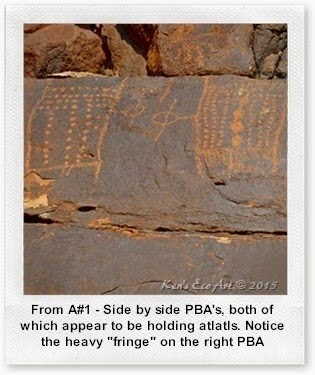 |
| (Fig. 07) |
|
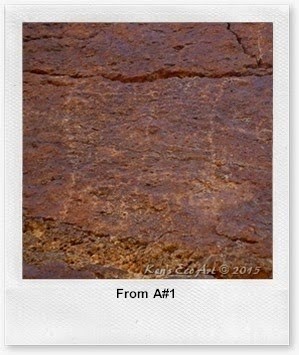 |
| (Fig. 08) |
|
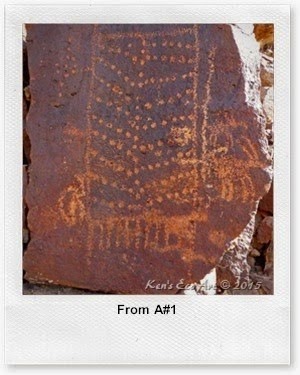 |
| (Fig. 09) |
|
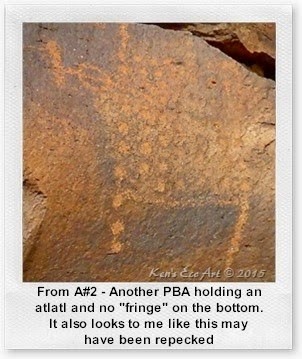 |
| (Fig. 10) |
|
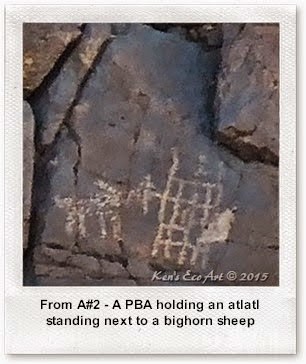 |
| (Fig. 11) |
|
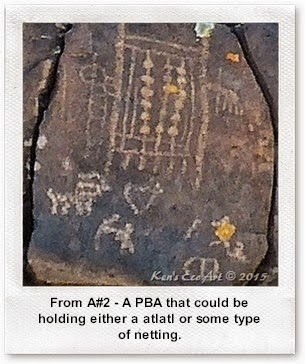 |
| (Fig. 12) |
|
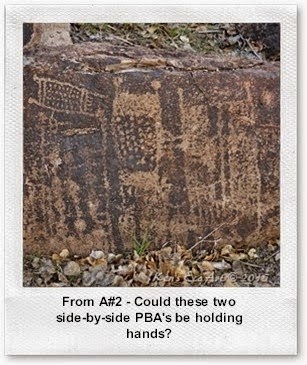 |
| (Fig. 13) |
|
 |
| (Fig. 14) |
|
 |
| Pahranagat Man: Easily recognizable, Pahranagat Man has a solid-pecked ovoid (Fig. 16) or rectangular body (Figs 15 & 17), large eyes (sometimes indicated by using negative space (Fig. 15), and a line protruding from its head; its arms may be straight, angled or portrayed down-turned with long digitate fingers. Much fewer in number, these striking figures almost seem somewhat haunting. Could they have been used to represent a shaman or have some other religious significance? |
 |
| Zoomorphs: Based upon the valley’s long history of abundant water, it supported a large number of animals that were drawn to its many lakes and marshes, making it a prime hunting area. The zoomorphs represented at various sites throughout the area depict a variety sheep, mule deer, elk (Figs. 20 & 22), coyote (Fig. 23) and rabbits. While the large majority of zoomorphs represented appear to be bighorn sheep, other animals are distinctly displayed. |
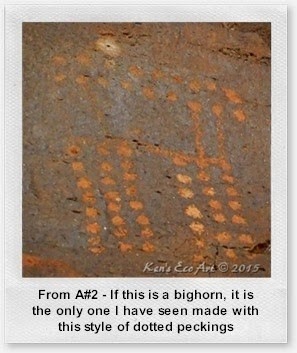 |
| (Fig. 18) |
|
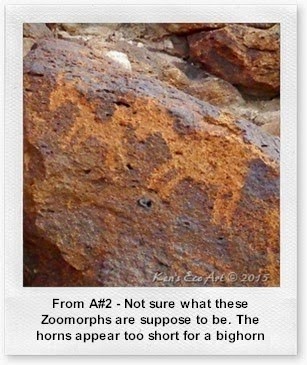 |
| (Fig. 19) |
|
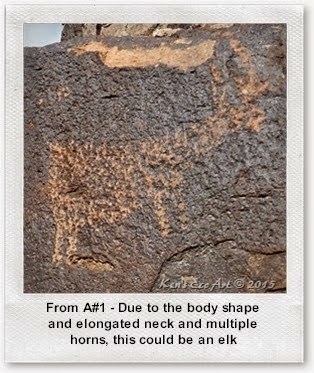 |
| (Fig. 20) |
|
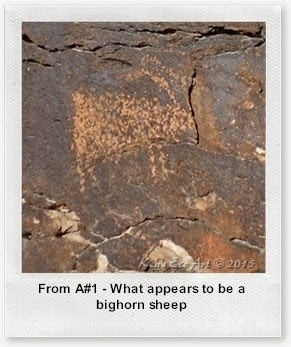 |
| (Fig. 21) |
|
 |
| (Fig. 22) |
|
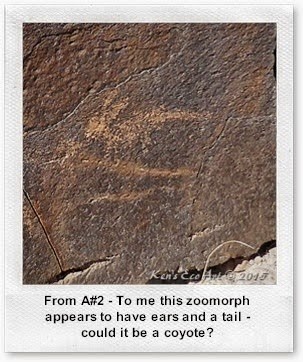 |
| (Fig. 23) |
|
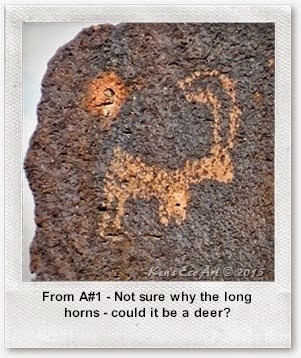 |
| (Fig. 24) |
|
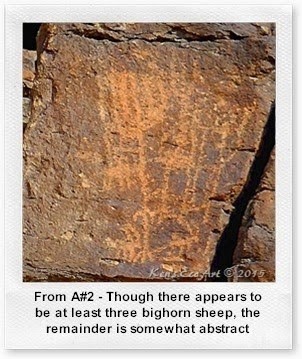 |
| (Fig. 25) |
|
 |
| ABSTRACT Rock Art: Although many ABSTRACT rock-art panels contain a variety of ziz-zag and parallel lines, circles and dots, the majority of abstract art at this site are mostly comprised of random rows of dots (Figs. 26-30). |
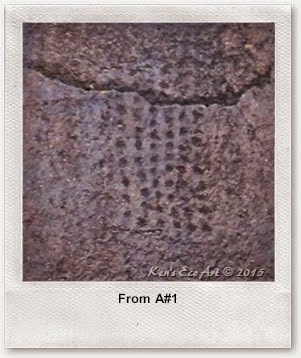 |
| (Fig. 26) |
|
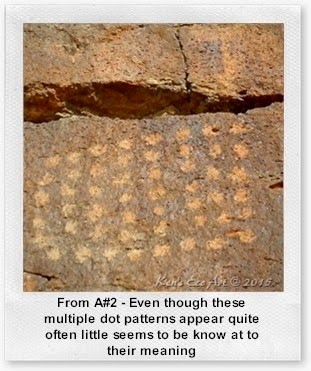 |
| (Fig. 27) |
|
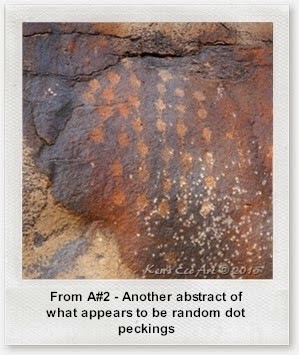 |
| (Fig. 28) |
|
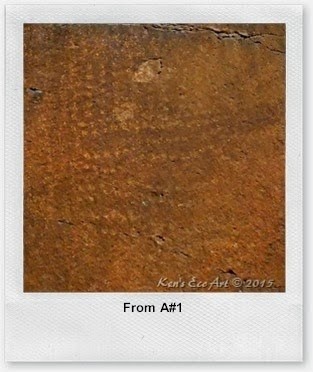 |
| (Fig. 29) |
|
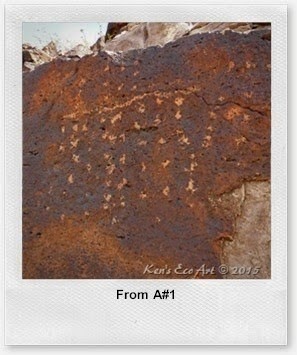 |
| (Fig. 30) |
|
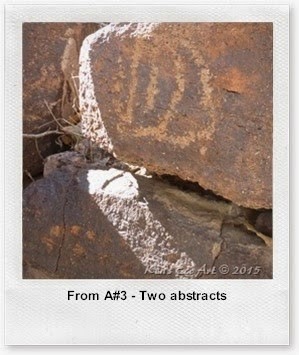 |
| (Fig. 31) |
|
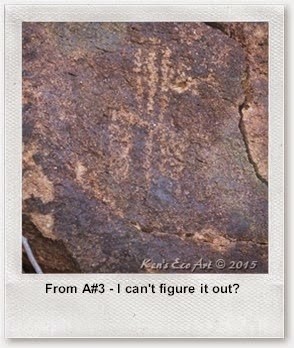 |
| (Fig. 32) |
|
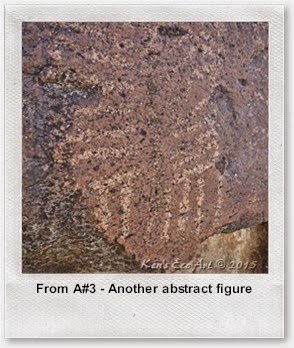 |
| (Fig. 33) |
|
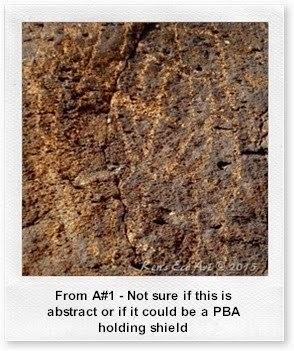 |
| (Fig. 34) |
| |
_______________________
Reference Materials:
Manuscript written by Kenneth C. Clarke

















